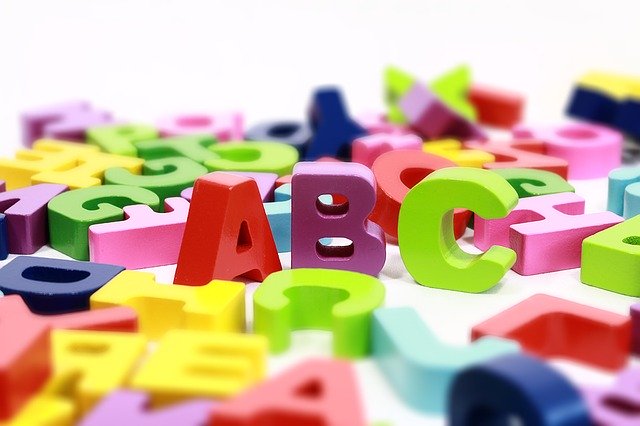Phonology
Phonology is the system of speech sounds that make up a language.
Phonological awareness is the ability to recognize and distinguish between sounds in a language. It involves hearing only.
It allows people to do the following:
- Count words in a sentence
- Count syllables in a word
- Identify rhymes
- Identify the sounds in a word
- Manipulate sounds (e.g., replace the “g” in got with an “n”).
Phonological awareness has different levels.
For example, counting the words in a sentence and identifying rhymes requires a lower level of phonological awareness, whereas counting the syllables in a word requires a higher level.
Identifying sounds in a word and manipulating (adding to or deleting) those sounds requires an even higher level.
Phonemes
A phoneme is an individual sound within a word.
There are around 45 common English phonemes.
Some phonemes correspond to only one letter, as in the case of consonants such as “b,” “p” and “n.”
For example, bin has three phonemes: b-i-n.
Other phonemes correspond to multiple letters or groups of letters. This is particular true of vowels, e.g., the long “a” sound can be spelled “a,” “ay,” “ai,” “ey,” “eigh,” and rarely “ea.”
The word way has two phonemes: w-ay.
Weigh also has two phonemes: w-eigh.
Phonemic awareness is the ability to identify and distinguish between individual sounds in words (i.e., phonemes). It requires a high level of phonological awareness, and it involves hearing only.
Phonemic awareness is a crucial skill for pre- and beginning readers. If they cannot hear sounds properly and/or tell the difference between them, they will not be able to consistently match sounds to letters and groups of letters.
Phonics
Phonics is the study of the relationship between sounds, letters, and words.
It involves sounds and writing.
The English written alphabet is a code in which letters and groups of letters represent sounds.
When children understand how sounds correspond to letters, they can use their knowledge to sound out thousands of words.
There are several major types of phonics. The major ones include:
Synthetic phonics involves explicit instruction in phoneme-letter correspondences and focuses on blending (i.e., synthesizing) sounds together to build words.
Analytic phonics moves in the opposite direction from synthetic phonics, beginning with whole words and analyzing their component parts. It may, for example, teach by analogy, using the a-t pattern in a word like cat to help children recognize bat, sat, rat, pat, fat, etc.
Embedded phonics is the “teach as you go approach,” providing instruction on an as-needed basis, while children are in the process of reading. This is the least structured approach, as well as the least effective.
Although the jury is still out on the relative superiority of synthetic vs. analytic phonics, the research is clear that a phonics program must be systematic to be effective.
Because English is more complex than other European languages and has more alternate patterns and exceptions, children must be given explicit, clearly sequenced explanations, along with plenty of practice, in order to apply what they are learning without unnecessary confusion.
For more information on this topic, download my full PDF phonics guide.





